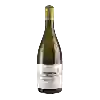
Domaine des ChambrisMeursault
This wine generally goes well with poultry, beef or veal.
Food and wine pairings with Meursault
Pairings that work perfectly with Meursault
Original food and wine pairings with Meursault
The Meursault of Domaine des Chambris matches generally quite well with dishes of beef, veal or game (deer, venison) such as recipes of ramen burger, porcini sauce or whole duck casserole with white wine.
Details and technical informations about Domaine des Chambris's Meursault.
Discover the grape variety: Pinot noir
Pinot noir is an important red grape variety in Burgundy and Champagne, and its reputation is well known! Great wines such as the Domaine de la Romanée Conti elaborate their wines from this famous grape variety, and make it a great variety. When properly vinified, pinot noit produces red wines of great finesse, with a wide range of aromas depending on its advancement (fruit, undergrowth, leather). it is also the only red grape variety authorized in Alsace. Pinot Noir is not easily cultivated beyond our borders, although it has enjoyed some success in Oregon, the United States, Australia and New Zealand.
Informations about the Domaine des Chambris
The Domaine des Chambris is one of of the world's greatest estates. It offers 11 wines for sale in the of Meursault to come and discover on site or to buy online.
The wine region of Meursault
The wine region of Meursault is located in the region of Côte de Beaune of Burgundy of France. Wineries and vineyards like the Domaine Coche-Dury or the Domaine d'Auvenay (Lalou Bize Leroy) produce mainly wines white and red. The most planted grape varieties in the region of Meursault are Chardonnay et Pinot noir, they are then used in wines in blends or as a single variety. On the nose of Meursault often reveals types of flavors of pineapple, banana or toasted almonds and sometimes also flavors of baked apple, elderflower or orange.
The wine region of Burgundy
Bourgogne is the catch-all regional appellation title of the Burgundy wine region in eastern France ("Bourgogne" is the French name for Burgundy). Burgundy has a Complex and comprehensive appellation system; counting Premier Cru and Grand Cru titles, the region has over 700 appellation titles for its wines. Thus, Burgundy wines often come from one Vineyard (or several separate vineyards) without an appellation title specific to the region, Village or even vineyard. A standard Burgundy wine may be made from grapes grown in one or more of Burgundy's 300 communes.
The word of the wine: Balance
Harmony of the different organoleptic elements of a wine. The balance is linked to the typicity of each wine. The sweetness of a sweet wine is an element of its balance, whereas a Sancerre or a Chablis will be asked to be lively and dry.














